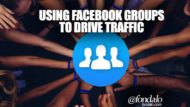Few would argue that we are not living in a time where entire industries and massive brands are being heavily disrupted. When solutions to old ways of doing things are combined with technology that facilitates innovative new ways of looking at and dealing with those problems, we tend to see market and digital disruption on a huge scale. Technology is often the driver for the innovation that we see today, yet business model changes and new marketing channels are combining to make this an even larger challenge for many.
Tech Innovation Without Business Transformation
New technology has to embody key innovations in order for real disruption to be realized at the levels we are seeing from the likes of Airbnb and Uber. What I mean by that is that tech innovation isn’t just about new capabilities, being the first to market or crazy ways of using or combining technologies to develop something different. Though these are all components within disruption, being successful at digital transformation of market sectors requires that companies combine these technology innovations with clear new business models and solutions that speak to the actual need of their market, and that allow the disruption to occur seamlessly and with a profit.
If we look back to the late 90’s and early 2000’s, we will recall technology disruption on a massive scale. The disruption that mass adoption of the internet spawned copious startups, venture capital investment and software applications that no doubt were innovative, however most lacked the business model, solutions based approach we are talking about here. Hence we saw a massive crash (the dot bomb) which occurred in 2000.
This crash should have shown many in tech, funding as well as startup entrepreneurs that all drive tech that old-world economic rules will have to ultimately be applied to the new internet and technology age. Many simply weathered the storm as best as possible and got right back to the same game, and we are still seeing a lot of this being played out today as more technology startups with massive investment fail, while very few rise to the market disruption level.
What Are The Sources Of Digital Disruption?
I believe if you are going to really understand digital disruption that is occurring within businesses of virtually every industry and of every size today, as well as really grasp what innovation and disruption is, we need to better understand how it is affecting business and what the drivers are. To this end, a recent study by Harvey Nash, in conjunction with KPMG, asked executives who said that they are experiencing digital disruption, what the primary sources of that disruption were. The answers should provide a clear indication of how technology, innovation and market disruption occur.
If you are currently experiencing digital disruption, what is the primary source of disruption?
- Nearly 30% of CIOs stated that the primary source of digital disruption is currently new digital innovations in product or service delivery within their sector.
- Almost 24% of CIOs indicated that digital disruption is driving new forms of customer engagement. This digital disruption source is primarily through mobile and social media channels, although personalised marketing using data and analytics is also a source referenced.
- 17% of IT executives admit to NOT knowing where digital disruption is coming from within their industry. This is possibly the most shocking statistic within this study and shows just how vulnerable some companies are to being left behind in their field.
- 30% of industry professionals state that new business models and/or new operating models are the source of their industry’s digital disruption. I find it interesting to note that rarely are business models acting alone WITHOUT new technology innovations that make those new models possible. I believe this statistic warrants consideration by many startup technology companies that are seeking to disrupt specific markets. Using this knowledge to help this niche to transform their businesses using innovative technologies is a hot spot right now that screams for new solutions!
How Companies Are Handling Digital Disruption
Among other things, the Harvey Nash/KPMG study also covered how companies are attempting to handle the digital transformation of their various industries. There is clearly no consensus on how to best handle this massive challenge and executives are split equally on the methods they are actually using to do so.
Managing digital disruption is currently spread nearly evenly between the following four areas:
- Hiring new talent with digital skills – 26%
- Developing existing staff with digital skills – 25%
- Partnering with other companies – 24%
- Contracting for specific digital skills – 21%
In additional there is a tiny element (2%) that are acquiring companies with the digital skills to enable managing digital disruption.
Digital Disruption Threat And Benefit
It is extremely important to note that most of these IT executives stated that they see digital disruption as a two-edged sword. The disruption within their markets is said to be both a threat and an opportunity by many IT leaders. Do not underestimate the benefit of disruption that has both of these components. You see, when threat is combined with opportunity, industries are far more open to move and embrace change. When disruption is seen as primarily a threat, organizations look at it more like war and will attack offensively to remove the threat, while creating defensive walls around their business. If you want to transform an industry with innovative technology, be sure that your threat to the status quo also includes benefits to the digital transformation that warrant making the painful changes early.
Two great examples of threat without benefit to an established industry are the companies we referenced earlier in this article. Uber and Airbnb are perfect examples of digital disruption that threatens two massive industries. Though they are pulling off their disruptions of the hospitality and transportation industries, you are seeing local and state governments fight back in order to save established industries, brands, jobs and economic infrastructures that are ancient. In the end we know who is going to win and it will not be the old business models.
We must also note that the benefits provided to the marketplace, namely consumers who prefer technology inspired innovations that solve access, cost and choice problems that the industry itself has controlled and ignored. So though Uber did not establish a benefit to the establishment in the industry, and threatened their entire business model, they DID however offer the consumer benefits and solutions that facilitated the digital transformation and is this is resulting in the entire industry’s disruption and digital transformation!
The current state of digital disruption is being driven by many factors, but those are not the only areas startups and existing companies should be focusing on.
Existing organizations should be squarely focused on incorporating digital transformation into every aspect of their business using innovative technologies, internal collaboration as well as investigating and implementing new business models that address the changes digital disruption is causing both their industry and their business. Partnerships, hiring talent and developing existing talent in order to obtain the digital skills that are required in today’s business climate.
Startups should be using studies like these to identify the trends within their own market niches and develop solutions that address the needs of businesses struggling to transform. Startups and innovative technology brands should also be very aware of the threat and benefit scenarios they are presenting with their solutions and ensure they are providing an appropriate level of both.






